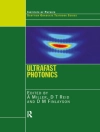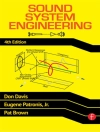In the aftermath of the “Deepwater Horizon” oil spill in the Gulf of Mexico, the need arose for experimental data on oil and gas hydrodynamics and particle formation under deep-sea conditions. This work presents a new High-Pressure Test Center that allows for experimental oil spill research under artificial deep-sea conditions. It also contains experimental data on drop formation processes and oil drop size distributions generated within this test center and a modeling approach ...
Innehållsförteckning
Introduction.- State of Knowledge.- Development of the High‐Pressure Test Center.- Experimental Determination of Oil Droplet Sizes in an Artifi...
Om författaren
Karen Malone studied Mechanical Engineering at Hamburg University of Technology and Luleå University of Technology, specializing in product development. From 2013 to ...












